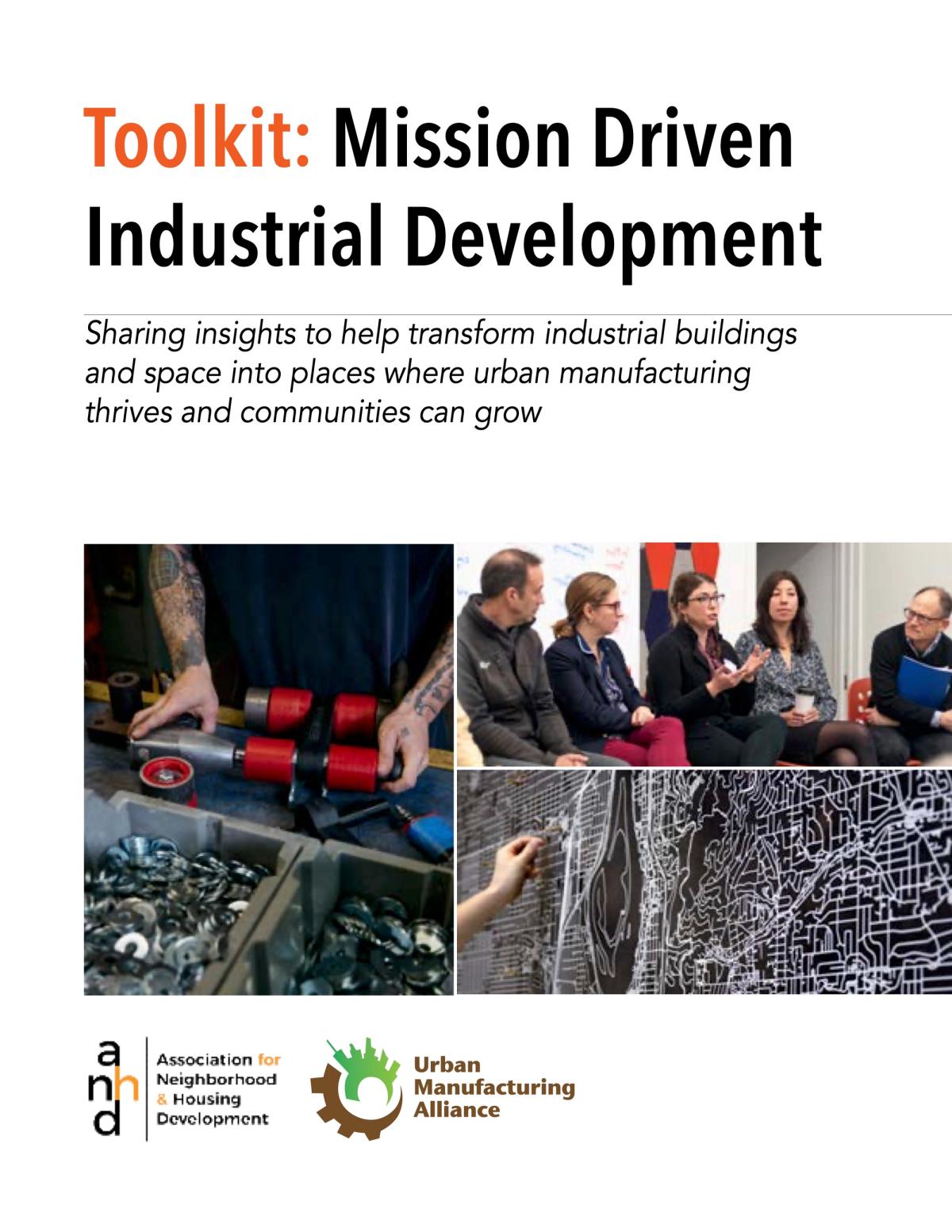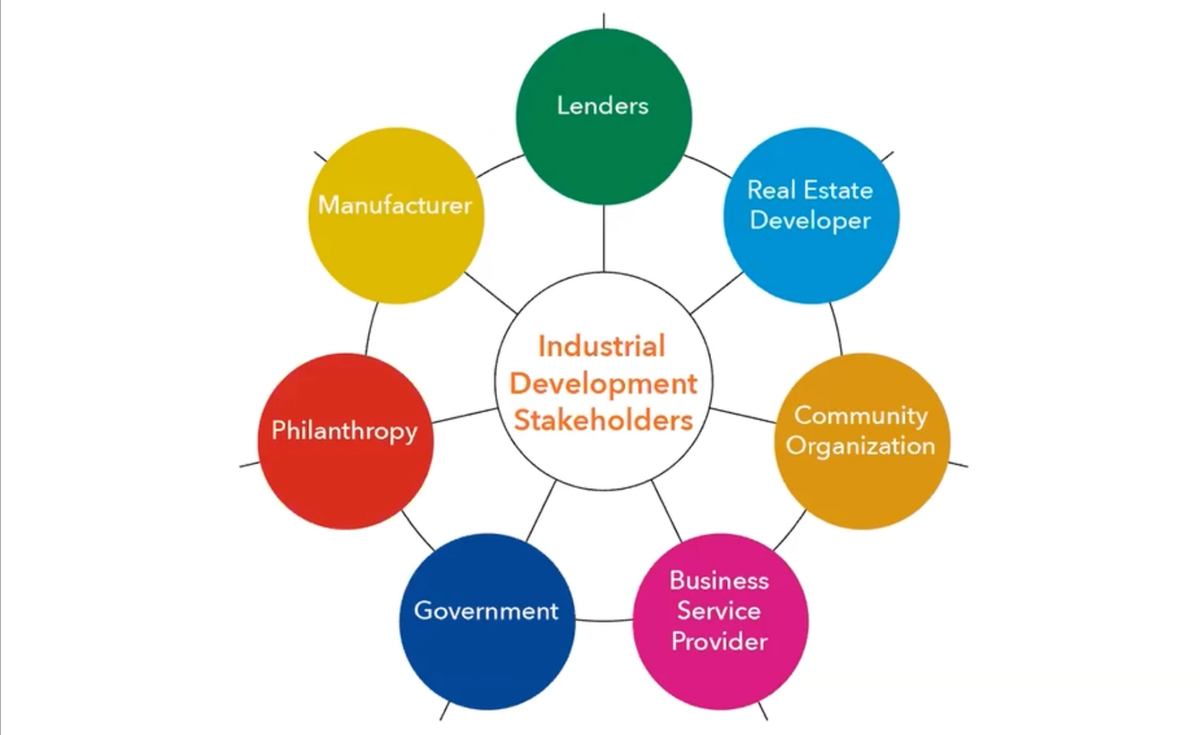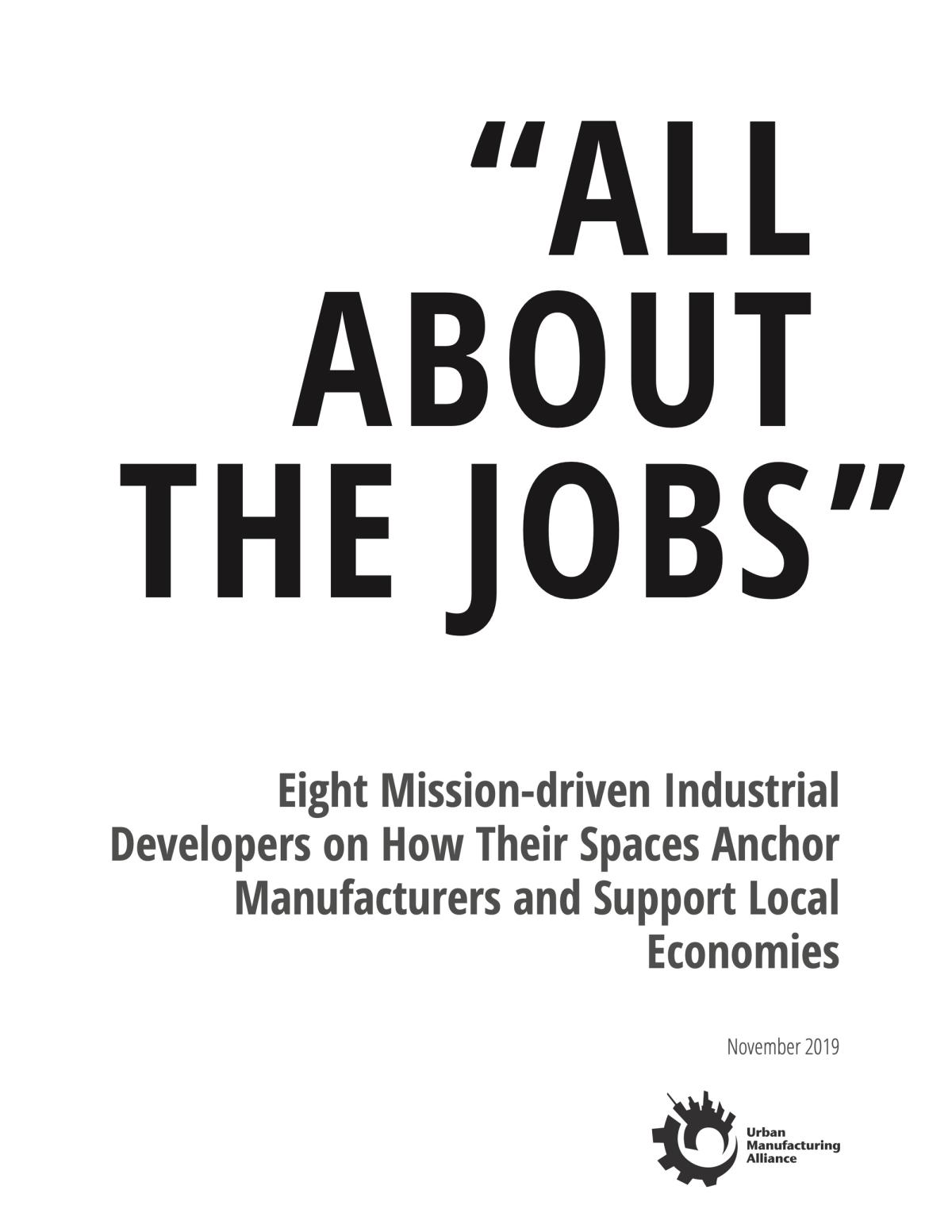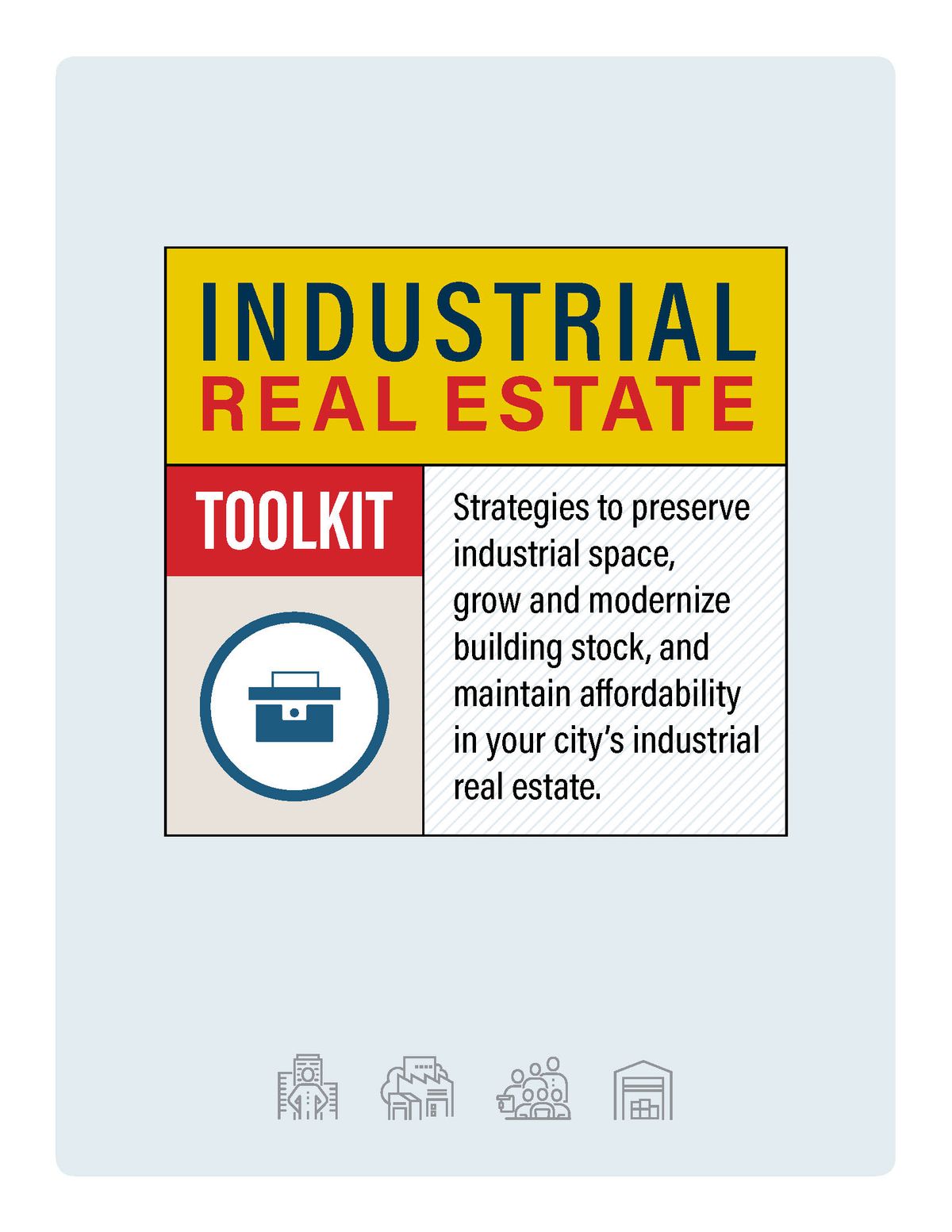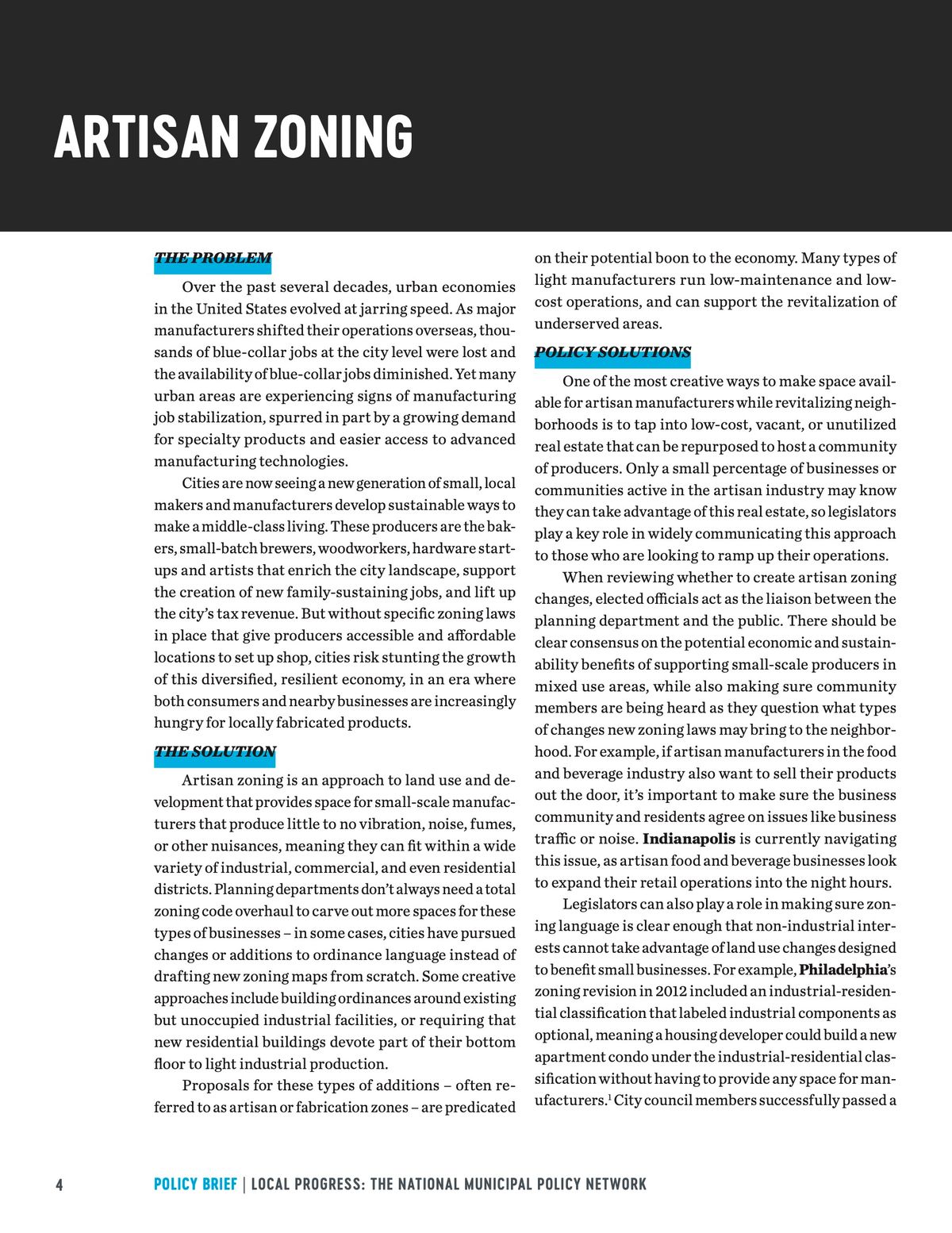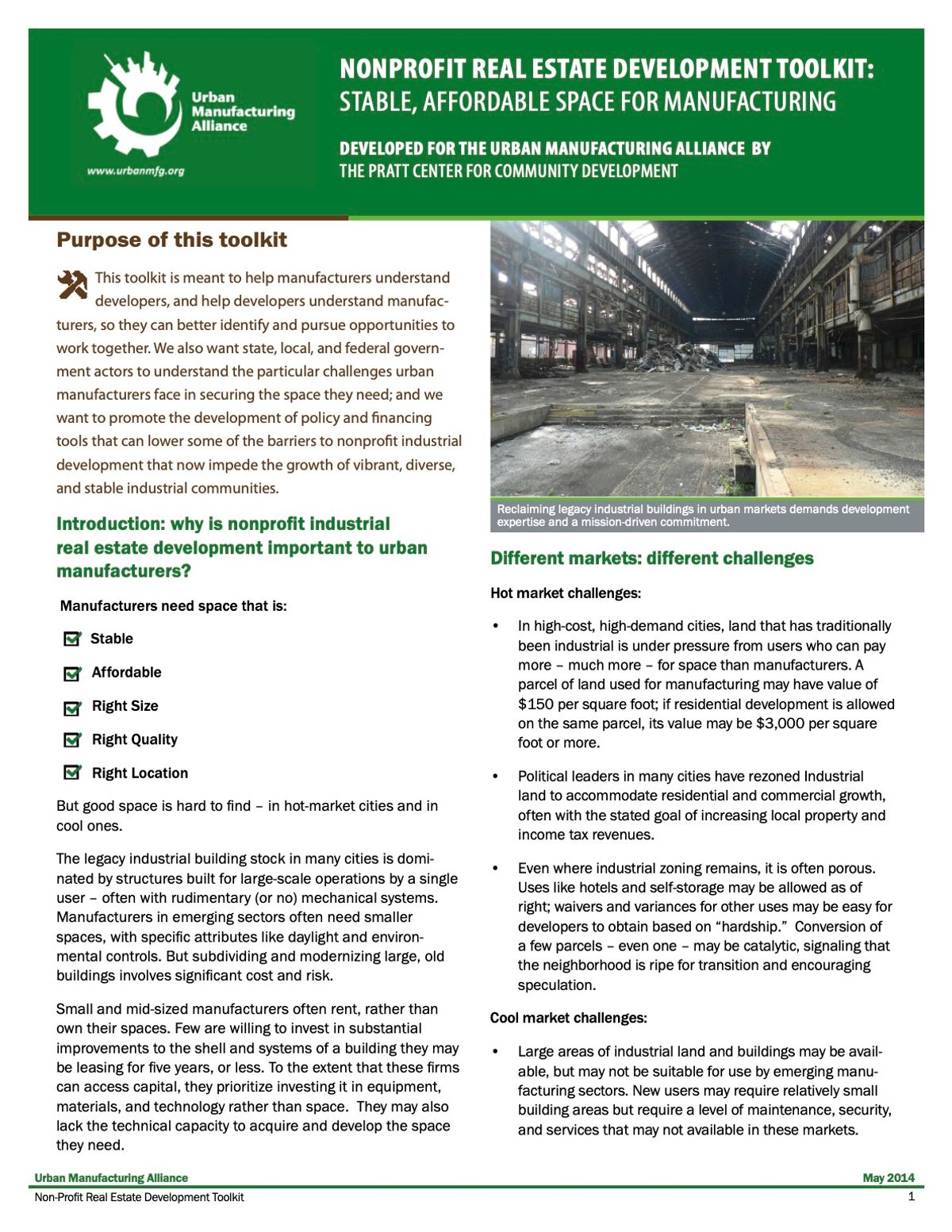Background
In 2018, the U.S. economy added 264,000 manufacturing jobs—the largest employment jump for the sector since 1988. But manufacturing as a whole still has its fair share of challenges, ranging from workforce gaps, competition with overseas manufacturers, and, for those manufacturers still running and operating in American cities, a lack of good-quality industrial space where they can work.
In hotter real estate markets, buildings that housed urban manufacturers during the 20th century are prime targets for real estate development projects, like housing or office space, that can usually turn a greater profit for developers than industrial uses. To slow this trend, cities from New York to San Francisco, and from Chicago to Boulder to Portland, OR, have enacted industrial protection codes to prevent the conversion of historic manufacturing buildings or industrial areas into residential uses. Indianapolis, Bozeman, Nashville, and Somerville, meanwhile, have enacted “Artisan Zoning” codes that permit low-impact manufacturing to take place in urban cores, reducing the chance that this activity gets pushed out of cities by non-industrial development.
These cities are preserving manufacturing spaces because manufacturing can bring family-sustaining wages to residents from a range of educational backgrounds. That in turn can help communities access economic mobility. Governments, economic development groups, social justice organizations, and education practitioners alike recognize manufacturing as a community asset for this reason.
